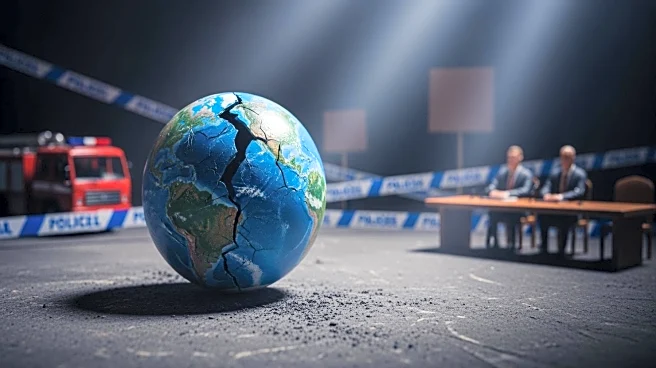What's Happening?
Peru's interim president has declared a state of emergency in Lima, citing crime as the primary reason. However, many observers believe the move is intended to address ongoing anti-government protests
that have persisted for weeks. The protests have been marked by public dissatisfaction with the government, leading to heightened tensions and unrest in the capital city. The declaration of a state of emergency allows for increased security measures and potentially restricts certain civil liberties in an effort to restore order.
Why It's Important?
The declaration of a state of emergency in Lima is significant as it highlights the ongoing political instability in Peru. This move could have implications for civil rights and the democratic process in the country, as it may limit freedoms and increase government control. The protests reflect widespread discontent with the current administration, and the government's response could further exacerbate tensions. The situation in Peru is being closely watched by international observers, as it may impact regional stability and relations with neighboring countries.
What's Next?
The state of emergency is likely to lead to increased security presence in Lima and potentially other areas affected by protests. The government may face criticism from human rights organizations and international bodies concerned about the restriction of civil liberties. The protests may continue, with demonstrators possibly adapting their strategies in response to heightened security measures. The government's ability to address the underlying issues driving the protests will be crucial in determining the future political landscape in Peru.













